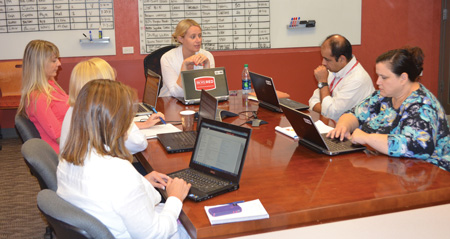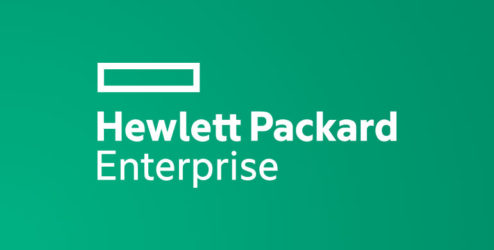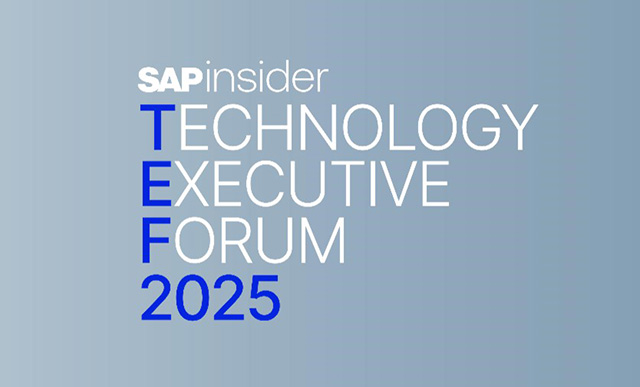Rich Products Corporation, a family-owned frozen food manufacturer and solutions provider based in Buffalo, New York, has its sights set on long-term global competitiveness. The company recognizes that to continue to meet customer expectations and win new business, it has to improve its ability to identify new product opportunities and deliver products to market faster.
“We place a high value on our customers and treat them like family,” says Gary Klosko, IT Program Manager for Rich Products. “Our business has been successful for a long time, but there’s never room for complacency. A big mission right now is building an even deeper relationship with our customers, along with a focus on improving speed, becoming more efficient, reducing costs, and continuing to innovate with new products.”
After conducting a cross-functional survey to assess its existing processes thoroughly, Rich Products determined that to achieve its goals, a comprehensive redesign of its overall product development process was required. Toward that end, the company undertook a “Speed-to-Market” (STM) initiative with the aim of optimizing processes and improving workflows, which would in turn increase user productivity and reduce compliance risk.
Klosko’s role at Rich Products is to work with the business to architect technology and process solutions that will enable capabilities necessary to meet its business strategies — specifically for larger business programs that have the potential to transform the way work gets done, such as STM. “From a business and IT perspective, an optimized common product development process could have a dramatic impact on the business with reduced cycle time, lower process costs, increased revenue from new product development, and with products delivered to the customer faster,” he says.
Developing a Proof of Concept
To carry out the STM initiative, Rich Products needed a product lifecycle management (PLM) technology solution to enable the redesigned process — a solution that was capable of supporting the company’s extensive product development and innovation requirements. After careful consideration — including attending conferences, talking to experts, hearing customer references, and witnessing demos — the company chose SAP Product Lifecycle Management (SAP PLM) (specifically for the recipe development and specification functionality, and the tight integration with SAP ERP to enable its transformed product development and data management processes).
To demonstrate to executive leadership how the technical solution would benefit the entire business, a team of information systems and business process associates executed a proof of concept (PoC). In addition to IT members, the PoC team included associates from the various functional areas the application would touch at the company’s headquarters and across its five regional business locations.
After extensive collaboration, the team identified six main objectives for the PoC:
- Learn the software functionality and configuration requirements
- Identify and assess any gaps in the functionality
- Understand how the technology will affect existing processes and identify opportunities for improvement
- Identify data migration and system interface requirements
- Understand technical infrastructure and implementation impacts
- Assess organizational change impacts
“As we evaluated the implementation together, we assessed how big it would be, what effort would be involved, what we would have to learn, and how we would build the plan going forward. It was a chance to get the business more engaged with the product; understanding it, becoming more comfortable with it, and wanting it,” says Klosko.
Over the course of five months, the PoC team assessed the technical solution based on these objectives. “We found a few gaps,” says Klosko. “But our position was that we would prefer to spend the time to close those gaps rather than purchase something else and deal with the integration. We knew we could make it work. More importantly, the PoC confirmed our belief that to gain significant improvements, we could not simply swap technology solutions but had to transform our work processes.”
The team then presented the assessment based on the PoC to Rich Products’ senior executives, who agreed that the proposed solution and approach were the right ones for the company.
“Once we finalized the PoC, the process transformation project began in earnest and ran in parallel with the system replacement,” says Klosko. “At that point, we started transitioning the project ownership more from IT to the business, especially on the process side — defining the process, making sure the system is enabling the process, and keeping an eye out that the most optimal solution is being built for the process.”
 |
|
“With proximity enabling verbal communication, many handoffs that occurred in the past can be eliminated or done much faster, there are fewer workflow lags, and tasks don’t sit in queues. Moving to that concept is transformational for us and is key to getting products to market faster.”
— Gary Klosko, IT Program Manager, Rich Products
|
Why SAP PLM?
According to Klosko, who was involved in the evaluation and selection of the technical solution, Rich Products chose SAP PLM to drive its STM initiative for four main reasons:
- It builds on the SAP ERP platform the company already has in place
- It provides critical integration from product development to the plant floor
- It offers better capabilities than the company’s existing PLM system
- Its specifications functionality supports an in-flight product quality initiative providing a common database and process for managing specifications focused on the customer’s requirements
It was clear the legacy PLM system the company was using was outdated, and as a stand-alone application, there was no native integration with the company’s existing SAP solution landscape — which included SAP ERP, SAP Supply Chain Management (SAP SCM), and SAP Business Warehouse (SAP BW) — and the system did not provide real-time information to users. It was common to have various handoffs from the legacy system to the SAP ERP system, where different people had to re-enter the same information before the product could be launched.
“From an IT perspective, we knew the legacy PLM system needed to be replaced because the version we were on was no longer supported. Additionally, the system, along with the current process, wasn’t universally accepted by our user community. When looking for a replacement, we dug into SAP PLM and valued the integration we saw there. As an SAP shop, it made sense to us,” says Klosko. “If we chose something non-SAP, we would have had to integrate it ourselves and end up with the same challenges we have with our legacy system. An integrated system would streamline our processes and get us to market faster.”
Now, with the recipe development functionality in SAP PLM, the finished product and all its components (recipes, formulas, ingredients, packaging, specifications, and nutritional and labeling information) are linked together within SAP ERP. That integrated data is the same data that is used for managing the supply chain. Information feeds all the way down to the bill of materials on the shop floor, providing a tighter integration between the R&D and Production departments.
And the benefits of SAP PLM weren’t limited to its integration capabilities. The enhanced workflow capabilities helped enable the redesigned product development process.
Workflow Improvements
With a strong focus on innovation and more than 2,000 products produced in 34 manufacturing facilities worldwide, new product development or product change projects are constantly being launched. The continuous barrage of projects can be overwhelming and easily distracting to those working on them. When moving between projects, people naturally lose efficiency as they try to remember exactly where they left off with each one, what they were doing, and what they were thinking. As part of the STM initiative, Rich Products wanted to simplify its product development process and reduce or eliminate some steps in the workflow to help improve user productivity, deliver products faster, and reduce compliance risk.

To help achieve these goals, the company created something called “natural work teams” — groups of people from different functional areas that are involved in the product development process for a particular product category, such as bakery, pizza, and so on. “This is where the process transformation work really comes into play,” says Klosko. “Imagine co-locating R&D developers in a room with a project manager, some process managers, and packaging associates, and all they do is work on bakery projects together. These groups of people are independent units that control their own work and resources, communicate, follow through, and get the work done faster. With proximity enabling verbal communication, many handoffs that occurred in the past can be eliminated or done much faster, there are fewer workflow lags, and tasks don’t sit in queues. Moving to that concept is transformational for us and is key to getting products to market faster.”
The new SAP PLM functionality also contributed to the workflow and efficiency improvements. The overall project workflow to commercialize a new product involves multiple steps executed by up to seven different functional areas. Some of these areas are involved at multiple points in the process, with some of the points being simply to recheck work done by previous groups. If anything was found wrong with the data or if changes needed to be made at any point, the process essentially had to start over again from the beginning. With the SAP workflow capabilities, that is no longer the case. “Now we can go back to a selectable point in the workflow,” says Klosko. “If regulatory sees something wrong, it will go back to the point in the workflow where the corrections need to be made, rather than going back to the first step. This advancement makes us much faster and more efficient. We also eliminated the non-value-added steps through internal process change and, where possible, through system automation.”
Data Migration Efforts
According to Klosko, the data migration and cleansing piece of implementing a new solution can be a complicated and time-consuming effort. His recommendation is to start early, and from the outset, the project team at Rich Products had one person whose sole responsibility during the STM initiative was focused on the data. The team spent a long time considering the data migration to SAP PLM — thinking about what to migrate, how to migrate it, and what needed to be cleansed.
While recipe development doesn’t involve a transactional environment that operates the day-to-day activities of the company, like managing sales orders or inventory, the data involved is crucial information for developing products. “With transactional systems, any type of glitch at all can mean an order is not getting shipped or something is delayed. Recipe development isn’t as immediate, but the data is absolutely critical because it is the source for the label and ultimately defines what our customers want,” says Klosko. “Our product specification data was scattered in our legacy PLM system, departmental databases, and in various documents across multiple file systems. We didn’t have much consistency among the product categories, and a lot of that data was in documents and other unstructured sources. You need to get that data right for everything in your system to work smoothly and efficiently.”
The effort to cleanse the data and map it to SAP PLM was a challenge, but one that the team did not shy away from. “The specification database in recipe development is a powerful dynamic structure that can be configured to meet your needs,” Klosko says. “But until you have it defined, it’s hard to map that data. A lot of effort went into this data migration, and we are certainly pleased with the state and quality of our data today.”
Learning the New System
The last hurdle was getting people to understand the new system and the changes it would bring. “The PoC process was educational for both IT and the business,” Klosko says. “It provided a good indication of the learning curve our associates would need to go through as we transitioned to a more contemporary technology platform. People had been using our existing system for almost 15 years. They were familiar with that system and knew their product, formula, ingredient, and packaging codes by heart,” Klosko says. “With the SAP system, the specification number is key as it uniquely defines each object and is used as a primary method to navigate the system. Our associates had a difficult time with this and we quickly learned that the architectural differences from our legacy system alone would take some effort to get through.”
To get over this hurdle and keep the PoC on track, the team persisted in communicating the benefits of the new system and by mapping the data architecture of the legacy system to recipe development in the SAP system. And, by focusing on the advances in search capabilities and performing some minor custom development, the team was able to bridge the two user experiences and streamline the transition. “The data our associates were looking for is all still there; they just didn’t realize it right away,” he says. “We simply put forth a little effort to modify the system to make some data elements more visible and easier for users to be comfortable with, and it worked.”
Implementation Update
Based on the PoC, the first phase of the implementation was completed for a category of plants in the US and will serve as the foundation for a global rollout at all of Rich Products’ manufacturing facilities. The second phase is underway for the remainder of its plants in the US and Canada, and phase three will involve the plants in international regions.
As of this writing, although it is still too early to assess the impact of the initial implementation, the project team learned that making significant process and system changes at the same time was proving to be very challenging to end users. “For the second phase of the implementation, we subsequently offset the system from the process implementation by two months to ease into the change,” says Klosko. “This time will allow our associates to get familiar with the new process and adjust to their new roles prior to introducing the system change. Since the new process does not fully align with the old system, a little extra work may be required, but we felt it was necessary to lessen the impact of the change especially with the second phase being much larger than the first.”
Rich Products knows that more challenges are still out there lurking on the horizon. But, the business feels it has made enormous strides and is on the right track to efficiently deliver innovative
products to market faster.













